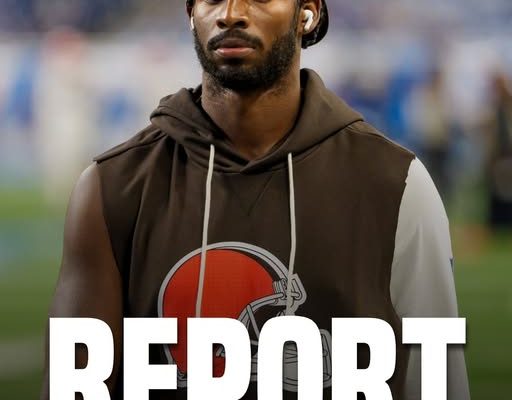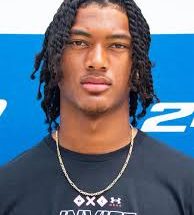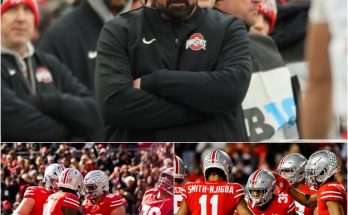Kevin Stefanski Clarifies QB Rotation: Shedeur Sanders Taking Limited First-Team Reps as Dillon Gabriel Solidifies Starting Role for Browns
The Cleveland Browns have entered another defining chapter in their ongoing quarterback evolution, and head coach Kevin Stefanski has finally brought some clarity to the situation. After weeks of speculation surrounding rookie sensation Shedeur Sanders and veteran signal-caller Dillon Gabriel, Stefanski confirmed what many insiders had been hinting at — Gabriel is solidifying his role as the team’s starting quarterback, while Sanders is taking limited first-team reps as he continues to develop within the system.
For the Browns, a team that has been through a carousel of quarterbacks over the past decade, stability at the position has always been elusive. This year, that search seems to have taken a new turn. Stefanski’s comments during the team’s media availability this week were measured but deliberate. “With Dillon starting, you want to make sure he gets a lot of the reps,” Stefanski said. “Shedeur’s still getting work in a bunch of different periods, but it’s different than when we had a veteran like Joe Flacco who could rotate seamlessly into first-team drills.”
That subtle acknowledgment of Gabriel’s emerging command and Shedeur’s current learning curve underscores a delicate balance that Stefanski and his staff are trying to manage — the need to win now while also preparing for the future. For a team that has battled inconsistency under center, this decision is both practical and strategic. It’s not a demotion for Sanders; rather, it’s a calculated step in his development path.
Gabriel, who came into the league with a reputation for poise, accuracy, and leadership, has quickly earned the trust of the Browns’ coaching staff and locker room. His preseason performances demonstrated both composure and adaptability. In practice, teammates have noted his crisp communication and deep understanding of the offensive playbook. While not the flashiest quarterback in the league, Gabriel’s efficiency and decision-making have made him the clear choice to lead the Browns offense for now.
Stefanski, who has always emphasized discipline and rhythm in his offensive scheme, seems particularly drawn to Gabriel’s ability to execute under pressure. “Dillon’s been steady,” Stefanski said. “He’s earned his opportunities. What we’ve seen is a guy who prepares like a pro, understands the pace of this league, and commands the huddle in a way that gives confidence to the guys around him.”
Those words, while supportive of Gabriel, also carry an implicit message for Sanders — that time, patience, and continued growth are key. Shedeur Sanders, the son of Hall of Famer and current college coach Deion Sanders, arrived in Cleveland surrounded by anticipation and media buzz. His name alone draws attention, but his talent has also impressed teammates and coaches alike. During the team’s rookie camp, Sanders showcased the arm talent, vision, and confidence that made him a standout at Colorado. Yet, as Stefanski noted, the NFL is a different beast.
Transitioning from college to the pros requires not just athletic ability but mastery of complex schemes, reading sophisticated defensive looks, and adjusting to the speed and physicality of professional defenses. Stefanski understands this better than most. His history of developing quarterbacks — from veterans like Kirk Cousins in Minnesota to the rotation of passers he’s managed in Cleveland — has shown that his approach leans heavily on preparation and patience.
“Shedeur’s doing everything we ask,” Stefanski continued. “He’s in the film room, he’s studying, he’s taking the right steps. He’s just in a different phase than Dillon right now.”
That phrase — “different phase” — perfectly encapsulates the Browns’ quarterback dynamic. Gabriel is in the here and now, the player entrusted to steer the offense this season. Sanders, meanwhile, represents the long-term vision. The Browns clearly believe that the young quarterback could become a cornerstone of their future, but they are not rushing the process.
For many fans, the idea of Shedeur Sanders sitting on the sideline might seem puzzling, especially given his college pedigree and the charisma that made him one of the most talked-about prospects in recent memory. But in Stefanski’s system, development isn’t about hype — it’s about readiness. The Browns are protecting Sanders from being thrown into the fire too early, a mistake that has derailed the careers of many promising young quarterbacks across the league.
NFL analysts have been divided on the Browns’ quarterback situation since training camp began. Some argue that Gabriel’s ceiling might be limited compared to Sanders’ raw upside, while others praise Stefanski’s decision to build stability first. The Cleveland front office, however, appears united behind its head coach’s vision. Sources close to the team suggest that Stefanski’s handling of the rotation is part of a larger, meticulously designed plan to groom Sanders for the future without disrupting the team’s rhythm in the present.
Inside the locker room, players have echoed Stefanski’s measured tone. Veteran wide receiver Amari Cooper praised Gabriel’s leadership during practice sessions, noting that his timing and precision have brought consistency to the passing game. “He’s just cool, man,” Cooper said. “You can tell he’s comfortable. When he steps in the huddle, everyone listens. That’s what you want from your quarterback.”
At the same time, Cooper and others have expressed admiration for Sanders’ work ethic. Running back Nick Chubb, who has seen his fair share of quarterbacks come and go, spoke highly of the rookie’s focus and humility. “He’s learning. You can see it every day,” Chubb said. “He asks questions, takes notes, and doesn’t act like he’s got it all figured out. That’s how you last in this league.”
The Browns’ decision also reflects a broader shift in the NFL’s approach to developing young quarterbacks. In recent years, teams have grown more patient with high-profile rookies, recognizing that throwing them into starting roles before they’re ready can be counterproductive. While there are exceptions — such as C.J. Stroud’s immediate success in Houston — many coaches are now choosing the long game, allowing rookies to learn behind veterans before assuming control.
Stefanski’s remarks about the difference between Sanders’ current reps and Joe Flacco’s previous situation highlight this philosophy. Flacco, a seasoned veteran, could seamlessly plug into first-team snaps due to years of experience. Sanders, meanwhile, is still internalizing the nuances of Stefanski’s offensive system — one that demands precision in timing, decision-making, and communication.
Even so, the Browns haven’t kept Sanders on the sideline entirely. Stefanski made it clear that the young quarterback continues to receive significant work across multiple practice periods, including scout-team scenarios and situational drills designed to simulate real-game pressure. The coaching staff is intent on giving him meaningful reps without the heightened scrutiny that comes with running the first-team offense in front of thousands of fans and media.
For Sanders, the situation could ultimately prove beneficial. The opportunity to develop in a controlled environment — with experienced mentors, without the crushing pressure of carrying a franchise too soon — could set the foundation for a successful NFL career. His father, Deion Sanders, often preaches patience and preparation, and those lessons seem to have resonated with Shedeur.
“He’s competitive, but he’s also mature enough to understand the process,” Stefanski said. “He knows that every rep, every meeting, every film session matters. That’s how you earn your shot.”
The Browns’ coaching staff has also been deliberate in managing expectations publicly. While fans might crave a quarterback controversy — a classic “battle” narrative between the rookie phenom and the established starter — Stefanski has maintained a steady, transparent message. There’s no drama, no tension, and no hint of division in the quarterback room. Both Gabriel and Sanders have embraced their respective roles with professionalism.
As the regular season progresses, the Browns’ offensive identity continues to take shape around Gabriel’s steady hand. He’s shown a growing command of play-action sets, quick-release throws, and intermediate routes that fit Stefanski’s preference for rhythm-based offense. His connection with Cooper, Elijah Moore, and tight end David Njoku has strengthened with each passing week, and the team’s offensive efficiency has improved noticeably compared to the previous season.
Meanwhile, Sanders continues to impress in practice, showing flashes of the talent that made him a star at Colorado. His mobility, arm strength, and pocket awareness have all drawn praise, and teammates note that he’s absorbing lessons quickly. While it might not be his time yet, the Browns’ long-term plan seems increasingly clear: build around stability now, and transition seamlessly when the future arrives.
For Cleveland, a franchise often haunted by its past instability at quarterback, this is a refreshing approach. Gone are the days of desperate midseason changes or rushed debuts. Instead, Stefanski is cultivating a culture of continuity, where both current performance and future potential are given room to thrive.
The fans, too, appear to be on board — cautiously optimistic, but trusting the process. The buzz around Sanders remains strong, but Gabriel’s calm command has won over skeptics. There’s a sense that, finally, the Browns have a plan — one not built on impulse but on patience and purpose.
As the season unfolds, the question isn’t whether Shedeur Sanders will play; it’s when. His talent is undeniable, his potential immense. But for now, Kevin Stefanski’s decision to limit his first-team reps isn’t a sign of doubt — it’s a sign of strategy. It’s about building something sustainable, something Cleveland hasn’t had in decades: a quarterback room built on trust, preparation, and progression rather than panic.
In the end, Stefanski’s clarity on the situation may be exactly what the Browns need. In a league that often chases instant gratification, his willingness to prioritize development over headlines stands out. Dillon Gabriel is the starter. Shedeur Sanders is the future. And for the first time in a long time, the Cleveland Browns seem to have both the present and the future of their quarterback position under control.
It’s a delicate dance — one between patience and progress, between the need to win today and the desire to build for tomorrow. But if Stefanski’s steady hand is any indication, the Browns may finally be learning how to do both.



